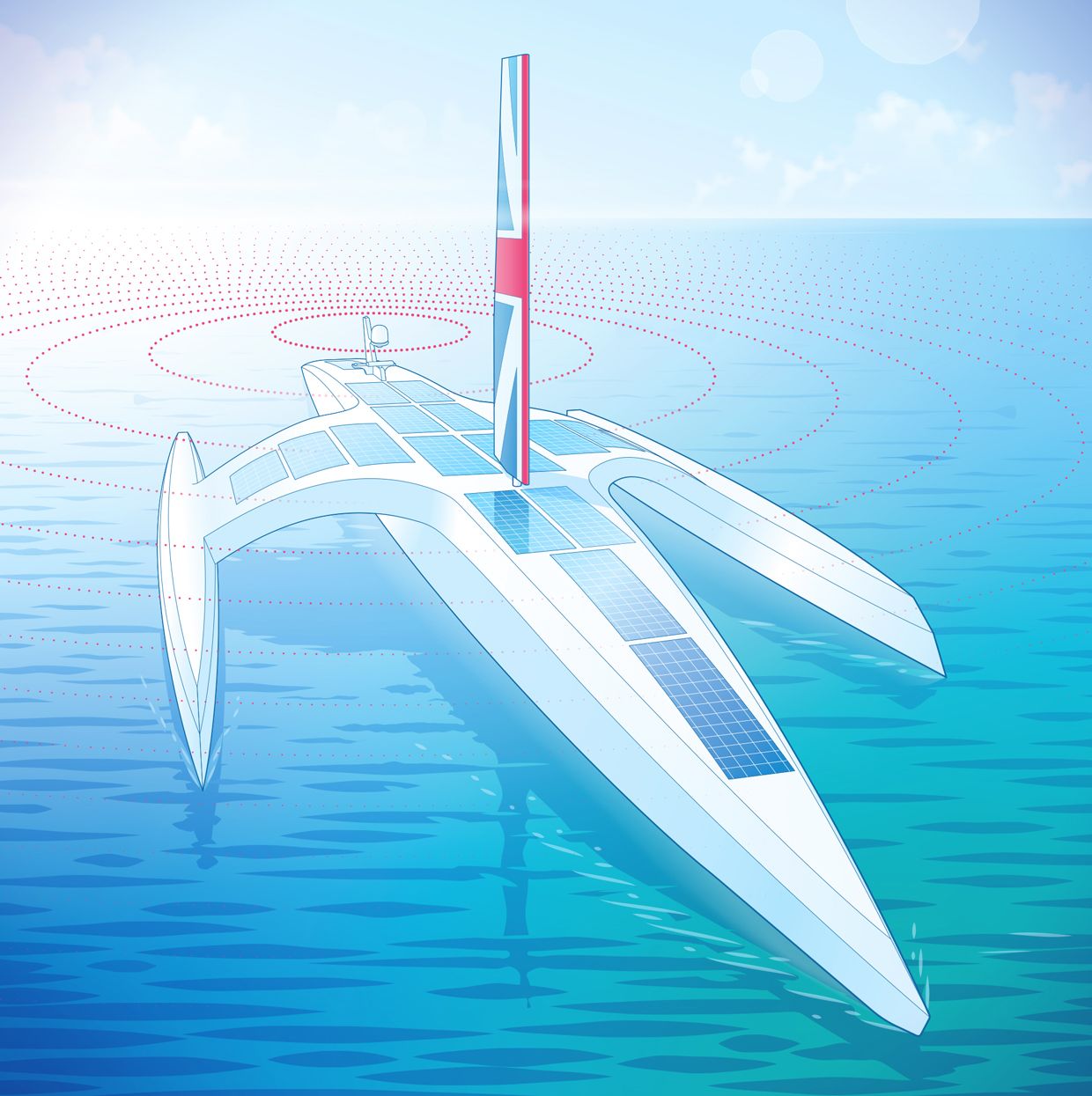The team behind the unmanned, solar- and wind-powered Mayflower races to launch it in time for the 400th anniversary of its namesake’s journey

Because it has neither pilgrims nor crew, this boat can put solar panels where the deck would be—and sensors way in the back.
In September a modern-day Mayflower will launch from Plymouth, a seaside town on the English Channel. And as its namesake did precisely 400 years earlier, this boat will set a course for the other side of the Atlantic.
Weather permitting, the 2020 voyage will follow the same course, but that’s about the only thing the two ships will have in common. Instead of carrying pilgrims intent on beginning a new life in the New World, this ship will be fully autonomous, with no crew or passengers on board. It will be powered in part by solar panels and a wind turbine at its stern. The boat has a backup electrical generator on board, although there are no plans to refuel the boat at sea if the generator backup runs dry.....MUCH MORE
The ship will cross the Atlantic to Plymouth, Mass., in 12 days instead of the 60 days of the 1620 voyage. It’ll be made of aluminum and composite materials. And it will measure 15 meters and weigh 5 metric tons—half as long and 1/36 as heavy as the original wooden boat. Just as a spacefaring mission would, the new Mayflower will contain science bays for experiments to measure oceanographic, climate, and meteorological data. And its trimaran design makes it look a little like a sleek, scaled-down, seagoing version of the Battlestar Galactica, from the TV series of the same name.
“It doesn’t conform to any specific class, regulations, or rules,” says Rachel Nicholls-Lee, the naval architect designing the boat. But because the International Organization for Standardization has a set of standards for oceangoing vessels under 24 meters in length, Nicholls-Lee is designing the boat as close to those specs as she can. Of course, without anyone on board, the new Mayflower also sets some of its own standards, too. For instance, the tightly waterproofed interior will barely have room for a human to crawl around in and to access its computer servers.
“It’s the best access we can have, really,” says Nicholls-Lee. “There won’t be room for people. So it is cozy. It’s doable, but it’s not somewhere you’d want to spend much time.” She adds that there’s just one meter between the waterline and the top of the boat’s hull. Atop the hull will also be a “sail fin” that juts up vertically to exploit wind power for propulsion, while a vertical turbine exploits it to generate electricity....